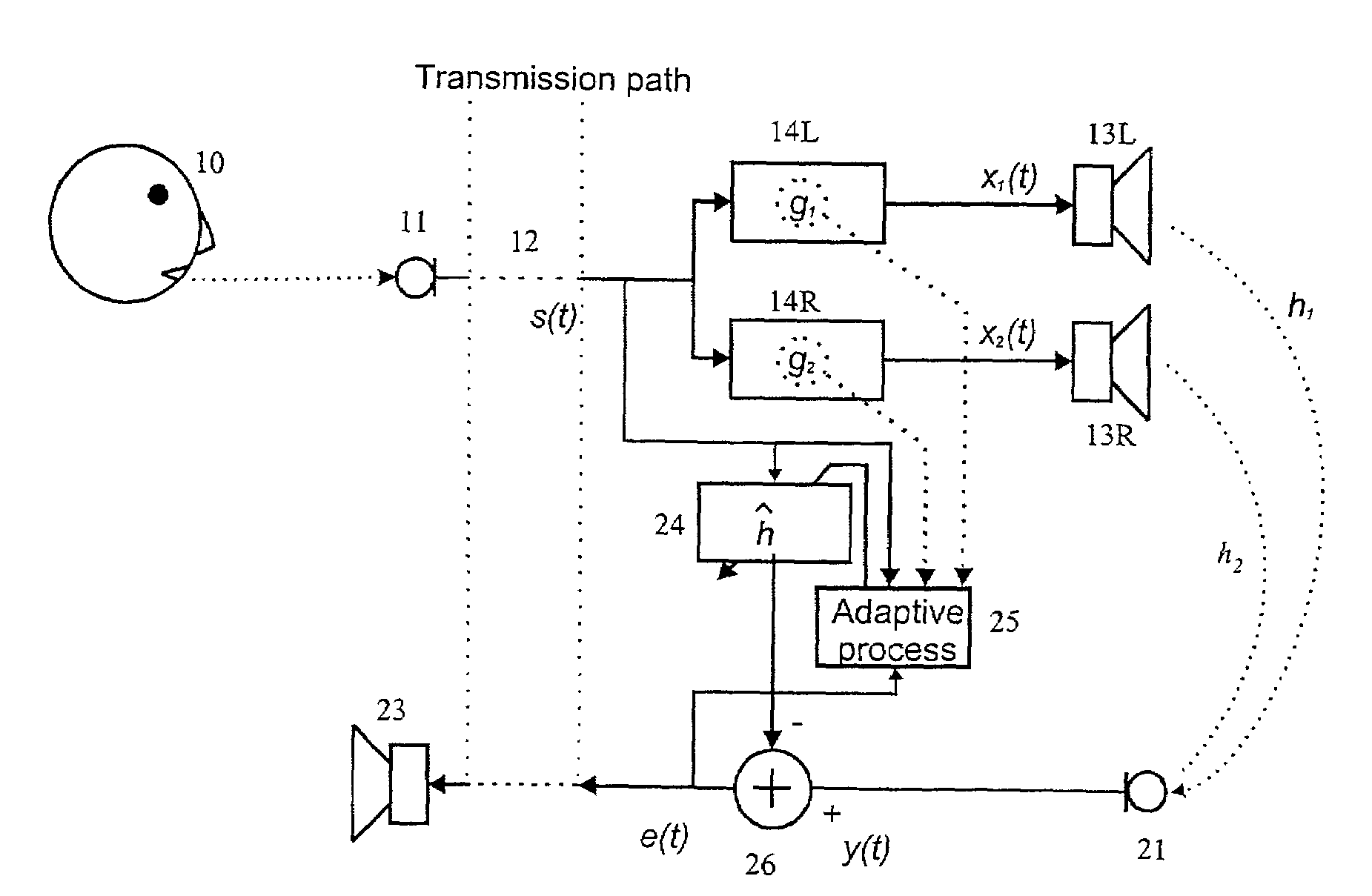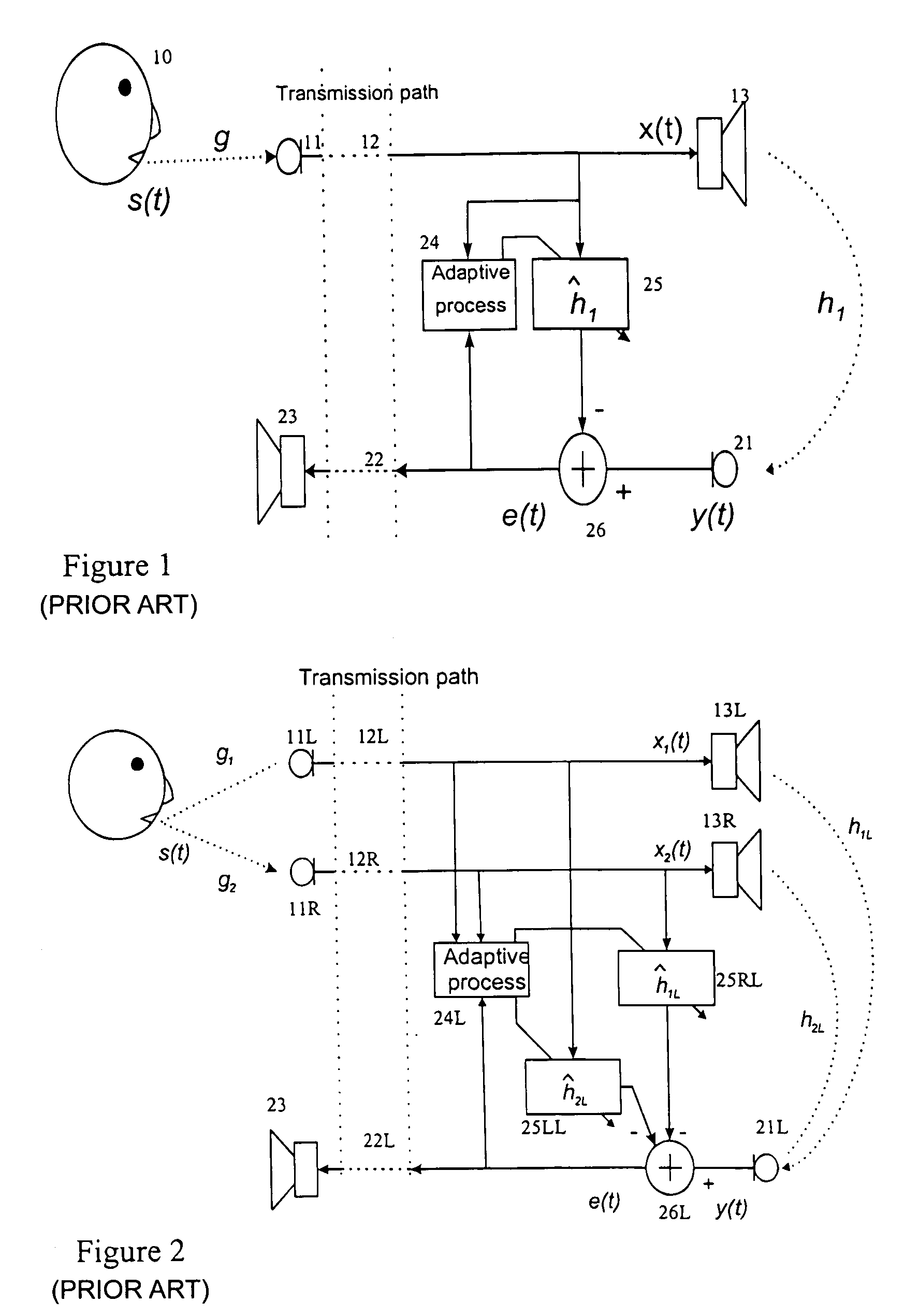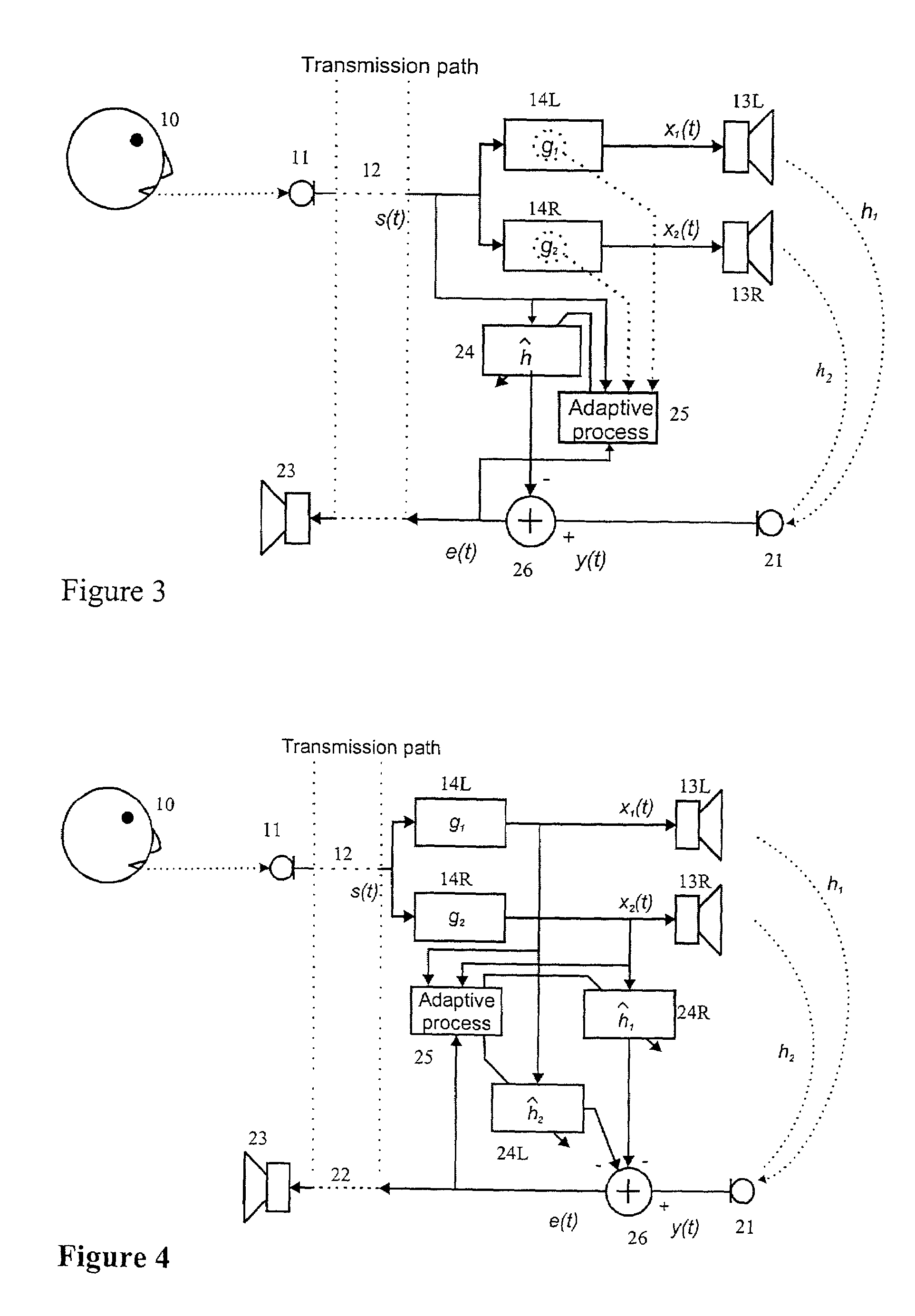Acoustic echo cancellation
a technology of acoustic echo and cancellation, applied in the field of multiple channel acoustic echo cancellation, can solve the problems of not being able to achieve a convergent set of filters, major obstacles to be overcome, and less advanced existing solutions, so as to reduce the number of filter operations
- Summary
- Abstract
- Description
- Claims
- Application Information
AI Technical Summary
Benefits of technology
Problems solved by technology
Method used
Image
Examples
Embodiment Construction
[0029]The monophonic system illustrated in FIG. 1 comprises an input path 12 connected to the source (microphone 11 and speaker 10) of the original signal s(t). This signal s(t) is modified by the transmission path 12 to generate a loudspeaker signal x(t) which is fed to the loudspeaker 13. The return path consists of a microphone 21, return transmission path 22 and loudspeaker 23. An acoustic path h1 exists between the loudspeaker 13 of one path and the microphone 21 of the other path. Hence, some sound originating with the speaker 10 will be returned to the loudspeaker 23 and will be heard by the speaker 10 as echo. This effect can be intrusive, especially as the transmission paths 12, 22 can introduce delays, so an echo cancellation processor 24, 25, 26 is installed to eliminate this signal. An adaptive processor 24 compares the signal e(t) to be transmitted over the return path 22 with the signal x(t) arriving over the input path 12 and identifies correlations between them. This...
PUM
 Login to View More
Login to View More Abstract
Description
Claims
Application Information
 Login to View More
Login to View More - R&D
- Intellectual Property
- Life Sciences
- Materials
- Tech Scout
- Unparalleled Data Quality
- Higher Quality Content
- 60% Fewer Hallucinations
Browse by: Latest US Patents, China's latest patents, Technical Efficacy Thesaurus, Application Domain, Technology Topic, Popular Technical Reports.
© 2025 PatSnap. All rights reserved.Legal|Privacy policy|Modern Slavery Act Transparency Statement|Sitemap|About US| Contact US: help@patsnap.com



